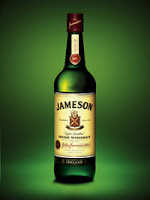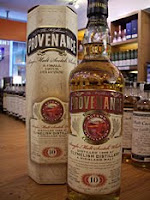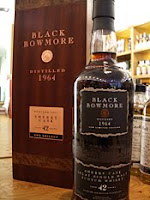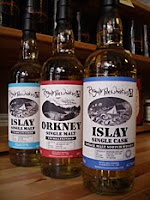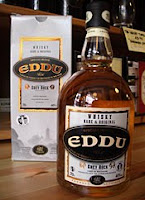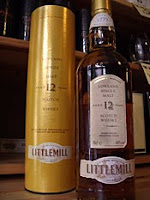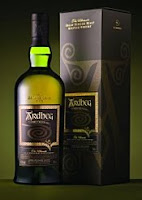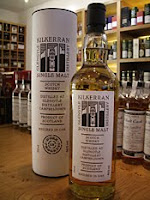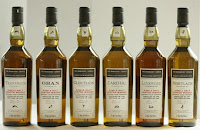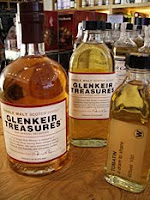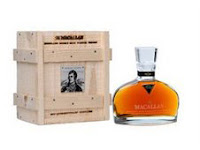 Macallan Burns Celebratory bottling
Macallan Burns Celebratory bottlingThis special release from the Macallan distillery is to commemorate the 250th anniversary of the birth of Robbie Burns, the famous Scottish poet. The whisky is selected from cask number 1759 (the year of Burn's birth) that was discovered in the warehouse. It was thought appropriate that this significant number should determine the whisky for this release. The whisky inside was distilled in 1997 and has been maturing in the sherry cask ever since. Only 250 bottles are being released at 46% ABV and they will only be available from the Macallan distillery shop for £199 each. Each bottle is presented in a specially designed crystal decanter and an oak casket that is handcrafted in Burns' home town of Alloway in Dumfries & Galloway.
 Glenrothes John Ramsey Legacy bottling
Glenrothes John Ramsey Legacy bottlingThis special edition whisky is released to celebrate the work of Edrington's legendary Malt Master John Ramsey, who retires at the end of this month after 18 years of service. The whisky is created from different ages of Glenrothes vintages ranging from 1973 to 1987, each one selected by Ramsey. There will only be 100 bottles of this unique whisky available at the princely cost of £699. These will be found in very selected whisky retailers and from the Glenrothes website www.theglenrothes.com. Each bottle comes in a hand crafted box with a booklet written by John Ramsey. Within the press release, they included these tasting notes -The appearance and colour is medium golden, clear and bright with a bouquet that is rich and spicy with blood orange and vanilla prominent. The palate is rich and full flavoured with balanced oak and fruit, especially mango. The finish is long, mature and tactile with an unmistakable American oak feel.
More information on both of these limited edition whiskies can be found on their respective websites www.themacallan.com and www.theglenrothes.com.

